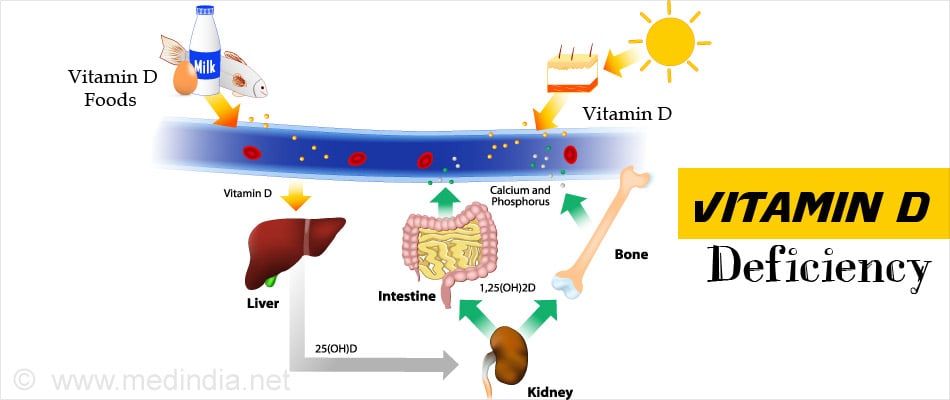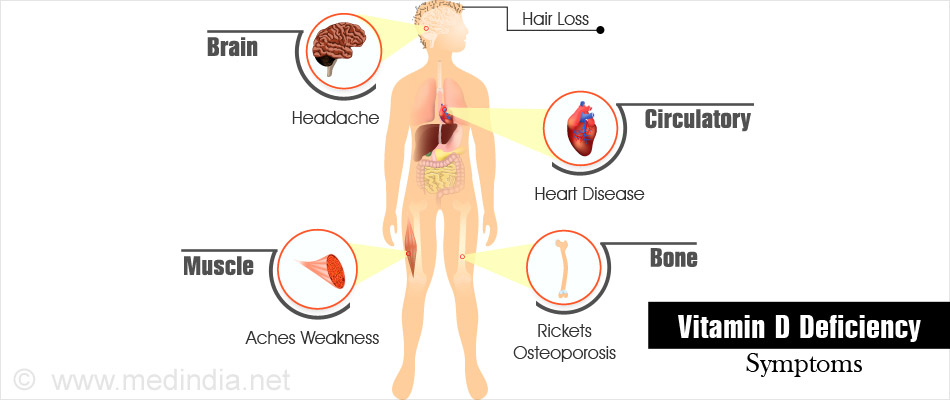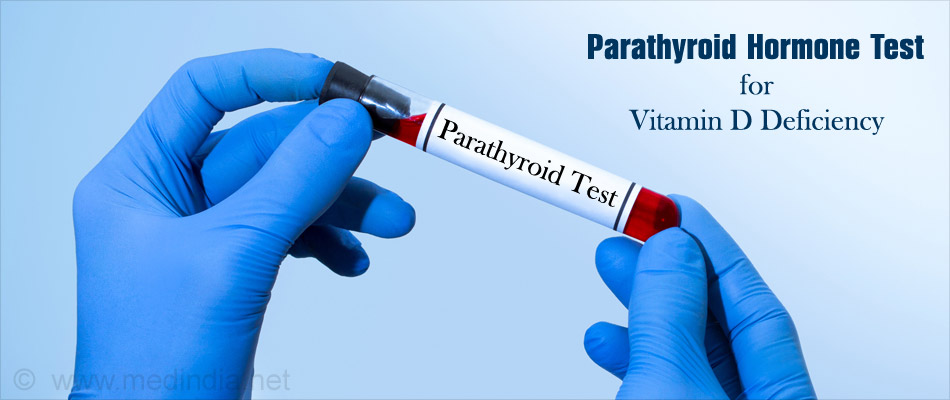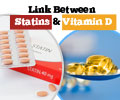- Vitamin D2 Is Much Less Effective Than Vitamin D3 in Humans - (https://www.ncbi.nlm.nih.gov/pubmed/15531486/)
- Vitamin D Deficiency - An Ignored Edpidemic - (https://www.ncbi.nlm.nih.gov/pmc/articles/pmc3068797/)
- Dietary Reference Intakes for Calcium and Vitamin D - (https://www.ncbi.nlm.nih.gov/books/nbk56070/)
- Vitamin D - (https://ods.od.nih.gov/factsheets/vitamind-healthprofessional/)
- Vitamin D Deficiency in Adults - When to Test and How to Treat - (https://www.ncbi.nlm.nih.gov/pmc/articles/pmc2912737/)
- How I Treat Vitamin D Deficiency - (https://www.ncbi.nlm.nih.gov/pmc/articles/pmc2835491/)
- Screening for Vitamin D Deficiency - (https://www.ncbi.nlm.nih.gov/books/nbk263420/)
What is Vitamin D Deficiency?
Vitamin D is an essential nutrient necessary to maintain healthy bones and teeth. It is available in certain foods, and if dietary intake or supplementation is inadequate, symptoms of vitamin D deficiency develop.
The prevalence of vitamin D deficiency is reportedly increasing worldwide. About one billion people worldwide have vitamin D deficiency. Traditionally referred as “Sunshine Vitamin”, it is produced endogenously by skin on exposure to sun (UVB radiation).
It is an important public health issue because vitamin D deficiency or hypovitaminosis D is an independent risk factor for total mortality in the general population.
Vitamin D deficiency is associated with increased risk of common cancers, autoimmune diseases, infectious diseases and hypertension.

What are the Different Forms of Vitamin D?
Vitamin D exists in two forms:
Vitamin D2 or Ergocalciferol is obtained from the ultra violet (UV) irradiation of the yeast sterol ergosterol and is found naturally in sun-exposed mushrooms.
Vitamin D3 known as Cholecalciferol, is synthesized by humans when ultra violet B (UVB) light from the sun strikes the skin, and so it is the most natural form.
Both forms are biologically inactive, and are converted in the body to the active form 1,25 dihydroxy vitamin D.
Recommended Dietary Levels of Vitamin D
According to the Food & Nutrition Board, the recommended daily allowances for Vitamin D are as follows:
Table 1. Recommended Dietary Allowances (RDAs) for Vitamin D
| Age | Male | Female | Pregnancy | Lactation |
| 0–12 months* | 400 IU (10 mcg) | 400 IU (10 mcg) | ||
| 1–13 years | 600 IU(15 mcg) | 600 IU (15 mcg) | ||
| 14–18 years | 600 IU (15 mcg) | 600 IU (15 mcg) | 600 IU (15 mcg) | 600 IU (15 mcg) |
| 19–50 years | 600 IU (15 mcg) | 600 IU (15 mcg) | 600 IU (15 mcg) | 600 IU (15 mcg) |
| 51–70 years | 600 IU (15 mcg) | 600 IU (15 mcg) | ||
| >70 years | 800 IU (20 mcg) | 800 IU (20 mcg) |
* Adequate Intake (AI)
Importance of Vitamin D
- Vitamin D stimulates intestinal calcium absorption & promotes bone growth. In case of its shortage, only 10–15% of dietary calcium and about 60% of phosphorus are absorbed by the body.
- Adequate levels of Vitamin D enhance calcium and phosphorus absorption by 30–40% and 80%, respectively. Lower levels of vitamin D result in soft bones in children (rickets) and fragile bones in adults (osteomalacia).
- Adequate Vitamin D nutritional status substantially reduces all-cancer risk in postmenopausal women.
- Epidemiological and experimental evidence also suggests that high levels of vitamin D decrease the risk of multiple sclerosis, acting as a potent immunomodulator.
What are the Causes of Vitamin D Deficiency?
There are several reasons for vitamin D deficiency to develop. These include
- Lack of Sun Exposure is the major reason for vitamin D deficiency in most humans.
- Inadequate Dietary Intake - This occurs when one follows a strictly vegetarian diet that doesn’t include eggs, fish and meat, which are good animal sources of vitamin D.
- Dark Skin - Melanin, the pigment responsible for skin color reduces the capacity of the skin to produce vitamin D from sunlight. Persons with darker skin are consequently at an increased risk of development of vitamin D deficiency.
- Obesity - An increase in body mass index (BMI) predisposes to vitamin D deficiency. Fat cells extract vitamin D from the blood, and affect its release into the circulation.

- Malabsorption States - Certain diseases such as cystic fibrosis,
Crohn’s disease and celiac disease impair the intestinal absorption of vitamin D, leading to its deficiency. - Kidney Disease - With increasing age, or in the presence of certain renal diseases, the body is unable to convert vitamin D to its active form, again leading to deficiency.
- Medications -Certain medications such as anti-seizure drugs (dilantin, barbiturates), and rifampicin used in the treatment of tuberculosis increase the catabolism of vitamin D in the liver, leading to deficiency.
What are the Symptoms of Vitamin D Deficiency?
Hypovitaminosis D in patients is associated with the following symptoms and signs, namely
Musculoskeletal symptoms, such as bone pain, myalgias (muscle pain), and generalized weakness. It may also cause insomnia, non-radicular back pain, arthralgias (particularly of the wrists, ankles, shoulders, and shins), proximal muscle weakness, headache, and hair loss.

What Are the Tests for Vitamin D Deficiency?
Vitamin D deficiency is determined by measuring serum 25-hydroxyvitamin D [25(OH)D] concentrations which are the major circulating form of vitamin D According to the committee of the Institute of Medicine a level of 20 ng/ml to 50 ng/mL is considered adequate for healthy people. A vitamin D level less than 12 ng/mL indicates vitamin D deficiency.
Table 2: Serum 25-Hydroxyvitamin D [25(OH)D] Concentrations and Health
| nmol/L** | ng/mL* | Health Status |
| <30 | <12 | Associated with vitamin D deficiency, leading to rickets in infants and children and osteomalacia in adults |
| 30 to <50 | 12 to <20 | Generally considered inadequate for bone and overall health in healthy individuals |
| ≥50 | ≥20 | Generally considered adequate for bone and overall health in healthy individuals |
| >125 | >50 | Emerging evidence links potential adverse effects to such high levels, particularly >150 nmol/L (>60 ng/mL) |
* Serum concentrations of 25(OH)D are reported in both nanomoles
per liter (nmol/L) and nanograms per milliliter (ng/mL).
** 1 nmol/L = 0.4 ng/mL
Measurement of levels of vitamin D–binding protein in conjunction with total 25(OH)D has also been suggested as a possible useful method for estimating bioavailable 25(OH)D. Liquid chromatography based methods, which use automated equipment featuring either UV or Mass spectrometric detection are also used.
Serum Parathyroid Hormone (PTH) Measurement - Vitamin D deficiency is generally associated with elevated PTH levels, suggesting secondary hyperparathyroidism. PTH levels normalize following correction of vitamin D deficiency.

What Are the Treatments for Vitamin D Deficiency?
The best treatment option is to take vitamin D supplements. They are safe and generally inexpensive. Both D2 (ergocalciferol) and D3 (cholecalciferol) are available as dietary supplements. It has been reported that a single dose of 50,000 IU of D2 or D3 produces a similar increase in the total 25(OH)D concentration. But studies say that due to apparent longer half-life of D3 less frequent dosing may be needed. The daily maintenance dose of vitamin D differs by age, but most children over one year and adults generally require 600-2000 IU of vitamin D daily.
Sources of Vitamin D (Diet and Supplements)
The dietary sources of vitamin D include food and dietary supplements. There are a few naturally occurring food sources of vitamin D. These include
- Fatty fish,
- Fish liver oil, and
- Egg yolk.
Some foods are, however, fortified with vitamin D.
The Dietary Guidelines for Americans describes a healthy eating pattern as one that
- Includes a variety of vegetables, fruits, whole grains, fat-free or low-fat milk and milk products, and oils.
- Includes a variety of protein foods, including seafood, lean meats and poultry, eggs, legumes (beans and peas), nuts, seeds, and soy products.
- Limits saturated and trans fats, added sugars, and sodium.
- Stays with the daily calorie needs

Health tips
- Keep & maintain a balanced approach to sun exposure.
- Never use a solarium to increase vitamin D as it gives off dangerous UV radiation, increasing the risk of skin cancer.
- Eat foods rich in vitamin D & calcium which include eggs, liver, and fatty fish such as mackerel, herring, almonds and salmon.
- Speak to your doctor if you are at risk of low vitamin D.









